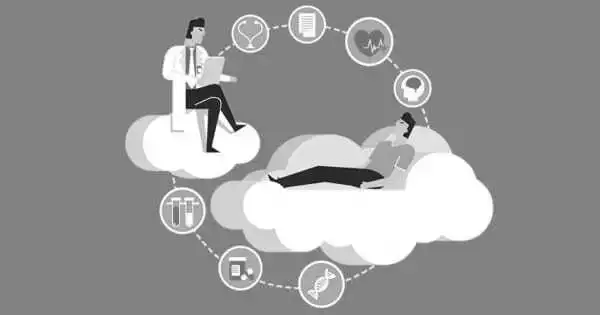People with PTSD and/or bipolar disorder who live in rural areas responded well to telehealth-based telepsychiatry, though those who received local psychotherapy completed more sessions. When the nearest psychiatrist’s office is dozens or even hundreds of miles away, a virtual connection may be enough to help people with serious mental health conditions get effective care through their local primary care clinic, according to a new study.
The randomized study of over 1,000 people with post-traumatic stress disorder, bipolar disorder, or both conditions found that the majority of patients used one of two types of telehealth. The study also provides insight into which patients may require additional assistance when receiving such care.
Half of the patients communicated directly with a distant psychiatrist and psychologist, while the other half mostly interacted with team members at the local primary care clinic who were guided by the distant psychiatrist. In any case, most patients responded favorably to medication and/or psychotherapy (also known as ‘talk therapy’) for their condition.
One significant difference emerged: patients who were assigned to receive psychotherapy from a specially trained nurse or social worker on staff at their local clinic completed 60% more such sessions than those who were assigned to connect with a psychologist via video. The ongoing in-person contact with their nurses or social workers to check on their other health needs could have been a factor.
This study demonstrated that patients with multiple psychiatric conditions and chronic physical health problems can benefit from mental health treatment with their primary care doctors or remote mental health specialists.
Jennifer Severe
The findings are from the Study to Promote Innovation in Rural Integrated Telepsychiatry, or SPIRIT trial, which included patients from 24 safety-net clinics in Michigan, Washington, and Arkansas. They were published in the Journal of General Internal Medicine.
This secondary analysis of the SPIRIT data was led by Jennifer Severe, M.D., of the Department of Psychiatry at Michigan Medicine, the University of Michigan’s academic medical center, along with fellow U-M psychiatrist Paul Pfeiffer, M.D., M.S., and John Fortney, Ph.D. of the Department of Psychiatry and Behavioral Sciences at the University of Washington. The research was carried out prior to the COVID-19 pandemic.
“The study began at a time when clinicians were skeptical of using telehealth or integrated care models to treat psychiatrically complex patients. One of the many concerns was, understandably, participation in care” Severe stated. “This study demonstrated that patients with multiple psychiatric conditions and chronic physical health problems can benefit from mental health treatment with their primary care doctors or remote mental health specialists.”

The two approaches used in the study were:
- Telepsychiatry Collaborative Care, in which a psychiatrist makes the initial diagnosis via video and the local clinic team provides brief psychotherapy while the local primary care physician handles medication prescriptions with the telepsychiatrist’s consultation.
- Telepsychiatry/Telepsychology Enhanced Referral, in which a psychiatrist makes the initial diagnosis and manages medication prescriptions while a psychologist provides telehealth psychotherapy.
Another study published last summer that used data from the SPIRIT trial found that patients in both groups reported significantly and statistically significant improvements in perceived access to care, reductions in mental health symptoms and medication side effects, and improvements in quality of life. There was no difference between the groups, and no differences in outcomes were found based on age, gender, race, or ethnicity.
The new study delves deeper into how patients’ clinical characteristics influenced their telehealth experience and how well they adhered to the treatment plan. Two-thirds of the patients in the study had Medicaid-eligible incomes or disabilities, and half were unemployed.
According to the findings, patients who have drug problems or who are experiencing manic symptoms as a result of their bipolar disorder may require additional assistance to begin or continue with psychotherapy.
It also demonstrates that those with multiple physical health conditions are more likely to adhere to their mental health medications and talk therapy programs, most likely because they are already visiting the primary care clinic for other types of care.
While the prevalence of mental illness is comparable between rural and urban residents, the services available can vary greatly. Mental healthcare needs are frequently unmet in many rural communities across the country due to a lack of adequate services. In rural areas, providing mental health services can be difficult.
















